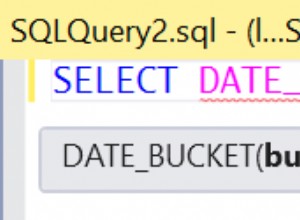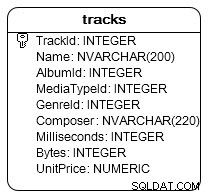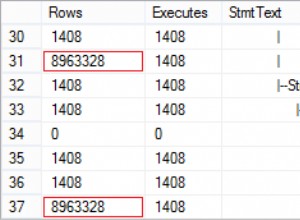यह उत्तर हैशिंग के लिए है, password_hash() , और password_verify() . mysqli और pdo दोनों के लिए। नीचे दिए गए लिंक में आगे के लिंक और लवण और इसी तरह के बारे में कुछ भाषा है।
यह महत्वपूर्ण है कि उपयोगकर्ता द्वारा प्रदत्त डेटा का सीधे चयन और सम्मिलन के साथ उपयोग न किया जाए। इसके बजाय, मापदंडों को बांधें और तैयार बयानों को पर कॉल करें। sql इंजेक्शन हमलों से बचें . डेटाबेस में पासवर्ड को कभी भी क्लियर (क्लियरटेक्स्ट) में सेव नहीं करना चाहिए। बल्कि, उन्हें वन-वे हैश के माध्यम से भेजा जाना चाहिए।
यह भी ध्यान दें। यह पंजीकरण हैशिंग और लॉगिन सत्यापन दिखा रहा है। यह पूर्ण विकसित नहीं है कार्यक्षमता मैं दस रुपये के लिए कोडकैनियन पर हॉक करने की कोशिश कर रहा हूं ... जैसे कि यह एक ईमेल पते का पुन:पंजीकरण दिखाता है (लॉगिन) पहले से मौजूद है, अपडेट करता है, आपको याद है। उस स्थिति में डीबी में जगह में अद्वितीय कुंजी सेट के कारण सम्मिलन विफल हो जाएगा। मैं इसे आप पर छोड़ता हूं, पाठक, लुकअप करने के लिए, और कहता हूं 'ईमेल पहले से पंजीकृत है।'
स्कीमा
CREATE TABLE `user_accounts2` (
`id` int(11) NOT NULL AUTO_INCREMENT,
`email` varchar(100) NOT NULL,
`password` varchar(255) NOT NULL,
PRIMARY KEY (`id`),
unique key(email) -- that better be the case
) ENGINE=InnoDB;
Register.php के माध्यम से चलने और उपयोगकर्ता को सहेजने के बाद, डेटा इस तरह दिख सकता है:
select * from user_accounts2;
+----+-----------+--------------------------------------------------------------+
| id | email | password |
+----+-----------+--------------------------------------------------------------+
| 1 | [email protected] | $2y$10$U6.WR.tiOIYNGDWddfT7kevJU8uiz8KAkdxXpda9e1xuplhC/eTJS |
+----+-----------+--------------------------------------------------------------+
mysqli अनुभाग पहले
register.php
<?php
mysqli_report(MYSQLI_REPORT_ALL);
error_reporting(E_ALL); // report all PHP errors
ini_set("display_errors", 1); // display them
session_start();
if(isset($_SESSION['userid'])!="") {
// you are already logged in as session has been set
header("Location: safe.php"); // note that this re-direct will at the top of that page
// ... and there to verify the session state so no tricks can be performed
// no tricks and gimmicks
}
if(isset($_POST['register'])) {
$email = $_POST['email'];
$ctPassword = $_POST['password']; // cleartext password from user
$hp=password_hash($ctPassword,PASSWORD_DEFAULT); // hashed password using cleartext one
// pretend the following is locked in a vault and loaded but hard coded here
$host="yourhostname";
$dbname="dbname";
$user="dbuser";
$pwd="password";
$port=3306; // comes along for the ride so I don't need to look up param order below
// end pretend
try {
$mysqli= new mysqli($host, $user, $pwd, $dbname,$port);
if ($mysqli->connect_error) {
die('Connect Error (' . $mysqli->connect_errno . ') ' . $mysqli->connect_error);
}
//echo "I am connected and feel happy.<br/>";
$query = "INSERT INTO user_accounts2(email,password) VALUES (?,?)";
$stmt = $mysqli->prepare($query);
// note the 2 s's below, s is for string
$stmt->bind_param("ss", $email,$hp); // never ever use non-sanitized user supplied data. Bind it
$stmt->execute();
// password is saved as hashed, will be verified on login page with password_verify()
$iLastInsertId=$mysqli->insert_id; // do something special with this (or not)
// redirect to some login page (for now you just sit here)
$stmt->close();
$mysqli->close();
} catch (mysqli_sql_exception $e) {
throw $e;
}
}
?>
<html>
<head>
<title>Register new user</title>
</head>
<body>
<div id="reg-form">
<form method="post">
<table>
<tr>
<td><input type="email" name="email" placeholder="Email" required /></td>
</tr>
<tr>
<td><input type="password" name="password" placeholder="Password" required /></td>
</tr>
<tr>
<td><button type="submit" name="register">Register</button></td>
</tr>
<tr>
<td><a href="index.php">Normal Login In Here</a></td>
</tr>
</table>
</form>
</div>
</body>
</html>
login.php
<?php
mysqli_report(MYSQLI_REPORT_ALL);
error_reporting(E_ALL); // report all PHP errors
ini_set("display_errors", 1); // display them
session_start();
if(isset($_SESSION['userid'])!="") {
// you are already logged in as session has been set
header("Location: safe.php"); // note that this re-direct will at the top of that page
// ... and there to verify the session state so no tricks can be performed
// no tricks and gimmicks
}
if(isset($_POST['login'])) {
$email = $_POST['email'];
$ctPassword = $_POST['password']; // cleartext password from user
// pretend the following is locked in a vault and loaded but hard coded here
$host="yourhostname";
$dbname="dbname";
$user="dbuser";
$pwd="password";
$port=3306; // comes along for the ride so I don't need to look up param order below
// end pretend
try {
$mysqli= new mysqli($host, $user, $pwd, $dbname,$port);
if ($mysqli->connect_error) {
die('Connect Error (' . $mysqli->connect_errno . ') ' . $mysqli->connect_error);
}
//echo "I am connected and feel happy.<br/>";
$query = "select id,email,password from user_accounts2 where email=?";
$stmt = $mysqli->prepare($query);
// note the "s" below, s is for string
$stmt->bind_param("s", $email); // never ever use non-sanitized user supplied data. Bind it
$stmt->execute();
$result = $stmt->get_result();
if ($row = $result->fetch_array(MYSQLI_ASSOC)) {
$dbHashedPassword=$row['password'];
if (password_verify($ctPassword,$dbHashedPassword)) {
echo "right, userid=";
$_SESSION['userid']=$row['id'];
echo $_SESSION['userid'];
// redirect to safe.php (note safeguards verbiage at top of this file about it)
}
else {
echo "wrong";
// could be overkill here, but in logout.php
// clear the $_SESSION['userid']
}
}
else {
echo 'no such record';
}
// remember, there is no iterating through rows, since there is 1 or 0 (email has a unique key)
// also, hashes are one-way functions in the db. Once you hash and do the insert
// there is pretty much no coming back to cleartext from the db with it. you just VERIFY it
$stmt->close();
$mysqli->close();
} catch (mysqli_sql_exception $e) {
throw $e;
}
}
?>
<html>
<head>
<title>Login</title>
</head>
<body>
<div id="reg-form">
<form method="post">
<table>
<tr>
<td><input type="email" name="email" placeholder="Email" required /></td>
</tr>
<tr>
<td><input type="password" name="password" placeholder="Password" required /></td>
</tr>
<tr>
<td><button type="submit" name="login">Login</button></td>
</tr>
</table>
</form>
</div>
</body>
</html>
नीचे पीडीओ अनुभाग
जब मेरे पास समय हो, शायद कल, लेकिन अभी के लिए मैं आपको इस मेरे उत्तर की ओर इंगित करता हूं। ।




